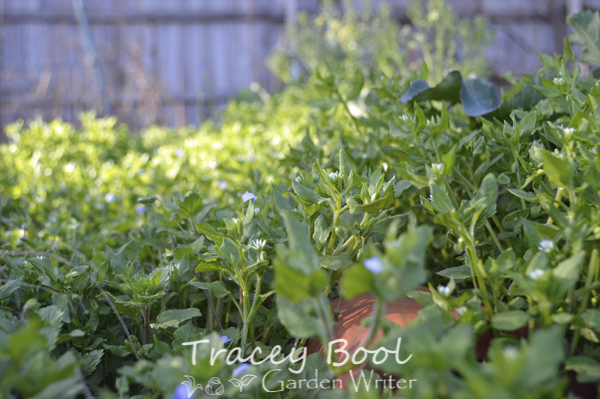|
Forager’s Delight: Chickweed
(11 September 2014) Yes, it can be prolific and annoying, and I admit that it has the word ‘weed’ in its name, but Chickweed is not only edible and tasty, it is also highly nutritious. In fact, Chickweed is high in vitamins A and C, protein, iron and anti-ageing antioxidants. Chickweed is a small-growing herbaceous annual which thrives in moist areas with rich soil. It is a common sight in the veggie patch (how convenient) and can be used raw in salads, as the base ingredient for pesto, or lightly stir fried and added to all manner of dishes. Harvest the fresh foliage and stems from the top third of the plant as the older growth tends to be fibrous and bitter. I use scissors, which makes it quick and easy, and it allows you to re-harvest in a week or two. Once spent, this weedy super-food can be removed and replaced with next season’s leafy green crop. A word of caution though – as with all plants you come across on the foraging trail, ensure you correctly identify Chickweed beforehand as many plants are toxic and should not be consumed. The Weed Forager’s Handbook (2012) by Adam Grubb and Annie Raser-Rowland is a handy field guide containing clear pictures and lots of information on the benefits and characteristics of common edible weeds in our area. |

